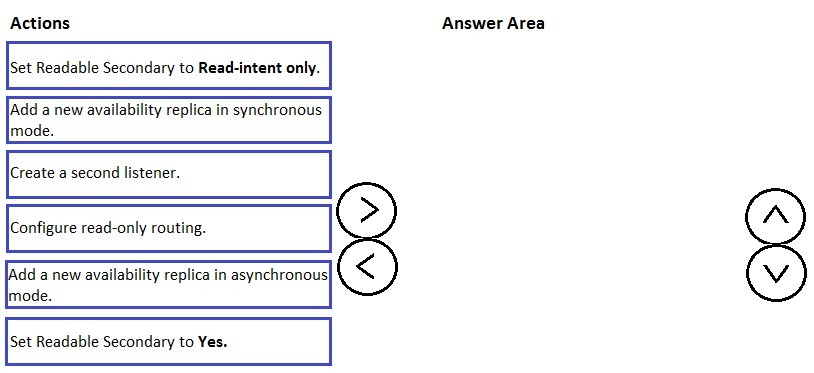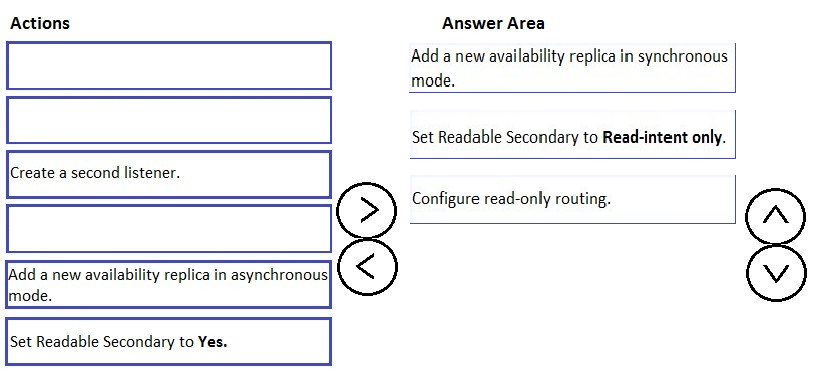

DRAG DROP -
You have a two-node SQL Server 2014 cluster that has an AlwaysOn availability group configured in synchronous mode.
You plan to provide a reporting solution by using a third node in the cluster.
You need to add the third node. The solution must prevent any impact on the performance of database writes.
You install another server that has SQL Server installed.
Which three additional actions should you perform in sequence? To answer, move the appropriate actions from the list of actions to the answer area and arrange them in the correct order.
Select and Place:

Deju
4 years, 10 months agoFame
4 years, 10 months ago